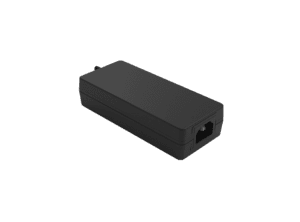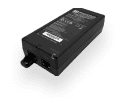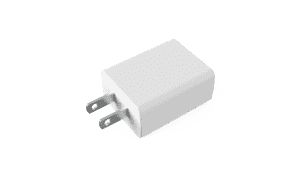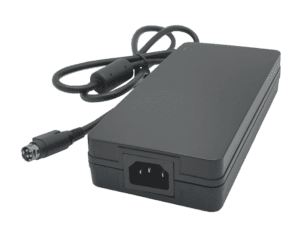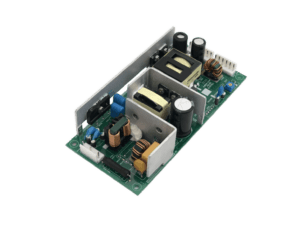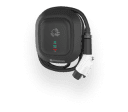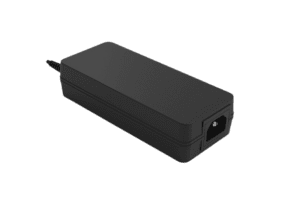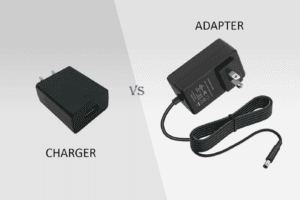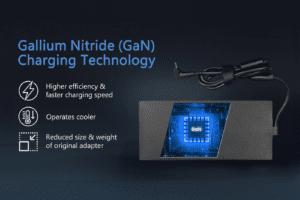BLOG
What Is the Best Enclosed Power Charging Station for Security Robots in Airports and Transit Hubs?
Table of contents
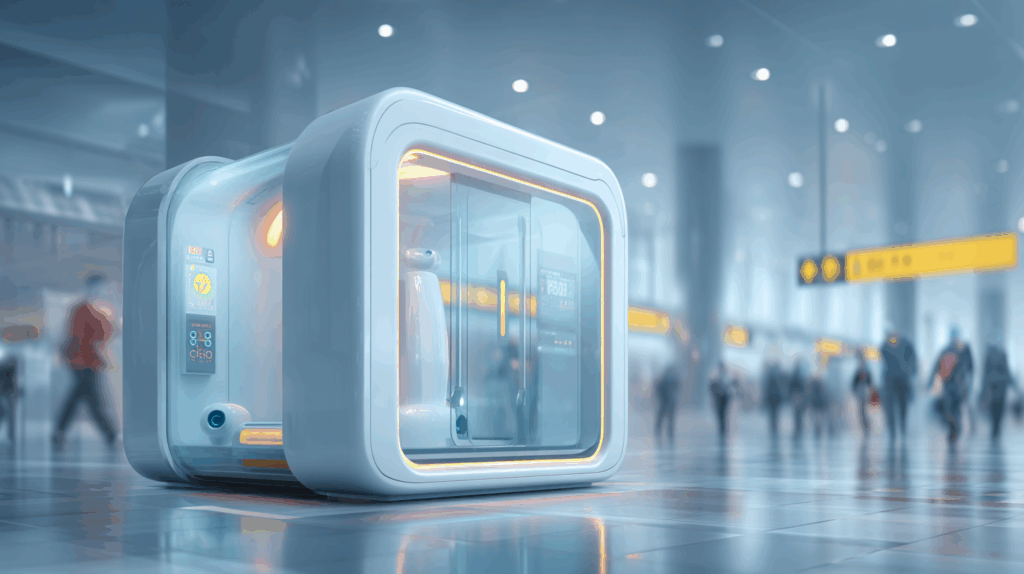
From bustling airport terminals to sprawling subway stations and light rail platforms, public transportation facilities are turning to autonomous security patrol robots to improve surveillance, deter crime, and assist passengers. But ensuring these robots remain charged, protected, and operational 24/7 presents unique challenges—especially in high-traffic, weather-exposed, and security-sensitive environments.
To meet these challenges, transit authorities and facility managers are now adopting enclosed robotic charging stations—fully sealed, tamper-resistant, and smart-charging infrastructure designed to safely support autonomous patrol bots without interrupting service or exposing systems to risk.
In this article, we explore how transit systems and airports are integrating enclosed charging docks, what makes them essential for real-world deployment, and how they align with safety, compliance, and operational efficiency goals.
Why Transit and Airport Patrol Bots Need Enclosed Charging Systems
Unlike warehouse or campus robots, security patrol bots in public transit operate in open, high-foot-traffic environments, often near entrances, ticketing areas, platforms, or terminals. Charging infrastructure in these areas must be discreet, secure, and protected from environmental and human interference.
Key Challenges
- Risk of tampering, vandalism, or accidental contact with charging equipment
- Exposure to dust, water, and temperature extremes in partially open structures
- Operation in crowded, unpredictable areas with constant foot traffic
- Regulatory constraints requiring tamper-proof and ADA-compliant installations
Key Requirements
- Fully enclosed housing (IP-rated, weatherproof, and impact-resistant)
- Lockable or retractable charging interface
- Visual and audio indicators for safety and operational status
- Edge-based safety logic for automated dock shutoff if hazards are detected
Best Practices
- Position docks near patrol handoff zones or near security stations
- Use signage and lighting to indicate charging zones without disrupting the environment
- Incorporate backup power options to maintain readiness during blackouts
- Perform nighttime vs. daytime usability tests to adjust brightness and alerts
In public spaces, charging a robot must be as safe and unobtrusive as it is efficient.
Enclosed Charging Docks: What Makes Them Transit-Ready?
An enclosed robotic charging station combines smart power delivery with physical protection, enabling secure operation in semi-public or exposed zones.
Core Features of Transit-Grade Enclosed Charging Stations
- Sealed IP67/IP68-rated enclosures to protect power modules from water, dust, or debris
- Automatic charging doors or retractable panels that open only when a robot is detected
- Touch-proof, magnetic, or inductive connectors that meet public safety codes
- Tamper sensors and intrusion alerts for real-time dock monitoring
- Optional integration with access control systems or security networks
Top Benefits
- Prevents damage from misuse, weather, or environmental hazards
- Ensures round-the-clock patrol coverage with safe autonomous docking
- Enhances robot and public safety by avoiding exposed electrical components
- Simplifies deployment approval from municipalities or transit safety boards
Best Practices
- Install bollards or curb barriers around docks to prevent scooter or cart collision
- Choose modular designs for easy replacement or relocation within transit zones
- Use low-profile enclosures that blend with terminal or station architecture
- Log every dock entry and charging event for operational traceability
Enclosed docks make it possible to charge robots safely in the most public-facing, high-security settings.
Smart Charging Logic for Autonomous Patrol Robots in Public Zones
Enclosed charging is only part of the equation—robots in public transit zones need smart charging logic that adapts to patrol cycles, traffic density, and emergency overrides.
Intelligent Features
- BMS communication to adjust charge cycles based on patrol duration
- Edge AI for real-time obstacle detection during docking
- Autonomous rerouting to alternative docks when primary stations are in use
- Integration with facility-wide systems (e.g., public safety dispatch, building access control)
Benefits
- Maintains consistent uptime for robot patrols, even during peak hours
- Reduces human intervention by enabling autonomous decision-making
- Enhances fleet coordination across large campuses or multiple terminals
- Allows real-time fault detection and charge prioritization
Best Practices
- Schedule charging during low-traffic hours or transition periods
- Monitor robot location and power levels via centralized dashboards
- Use predictive maintenance analytics to avoid unexpected dock failures
- Update firmware over-the-air to adapt to new routes or robot models
Smart logic + physical security = a complete, mission-ready charging solution.
CLIENT'S QUOTE
"Phihong’s PoE solutions have made a huge difference for us! Our network runs more efficiently, and we’ve seen real cost savings. We couldn’t be happier!"
Safety, Compliance, and Design Considerations for Public Deployments
Public transit systems and airports are governed by strict regulatory standards covering electrical safety, fire codes, ADA compliance, and equipment visibility.
Key Compliance Considerations
- UL 2593 / UL 2231 safety certification for unattended battery charging
- ADA clearance for walkways and protruding equipment
- IEC 60335 or CE compliance for international deployment
- Fire-resistant materials (UL 94 V-0 or equivalent)
Design Elements for Transit-Friendly Charging
- Rounded edges and shrouded electrical ports
- LED status indicators visible from multiple angles
- Accessible service panels with secure key or RFID entry
- Non-slip bases or raised platforms for curbside weather protection
Best Practices
- Involve facilities teams during design to identify siting and power constraints
- Perform human factors analysis to ensure public safety in all conditions
- Add multilingual warning labels or pictograms for international airports
- Document safety testing and certifications for public or municipal RFPs
Enclosed charging systems must not only power patrol bots—they must pass every public test of safety, access, and visibility.
How Phihong USA Supports Enclosed Charging Infrastructure for Transit and Security Bots
Phihong USA delivers ruggedized, safety-certified, and AI-compatible charging solutions for autonomous robots operating in public and semi-public environments. Our offerings include:
- Enclosed, IP67-rated dock housings for all-weather protection
- Smart AC-DC modules with surge, thermal, and overcurrent protection
- Secure connector options: magnetic, inductive, or touch-safe pogo pin
- CANBus and RS-485 support for fleet-level dock integration
- Engineering support for UL, CE, ADA, and municipal compliance
- Integration-ready enclosures for AI modules, LED indicators, and safety logic
Whether you’re deploying patrol bots in a train terminal or security units in an international airport, Phihong provides the power systems and protective infrastructure needed to support uninterrupted autonomous operation.

Contact Our Team Today!
Our dedicated sales team and international partners are prepared to support you with your latest projects and initiatives globally.
Explore More with Phihong USA
As we conclude our exploration of PoE technology, it’s evident how these innovations are streamlining power and data integration across various industries. Phihong USA stands at the forefront of this technological advancement, offering a diverse range of power solutions designed to meet the evolving needs of modern industries.
Phihong USA’s extensive product lineup includes:
- Power over Ethernet (PoE) Solutions: Delivering reliable power and data transmission over a single cable, ideal for simplifying network installations and reducing costs.
- AC/DC Adapters and Power Supplies: From compact adapters to industrial-grade power supplies, Phihong provides solutions that ensure efficiency and reliability in various applications.
- Battery Chargers: Customizable chargers for lithium-ion and lead-acid batteries, supporting a wide range of power requirements for mobility and industrial applications.
- Medical Power Supplies: Specialized power solutions designed to meet the stringent requirements of the healthcare industry, ensuring safety and reliability.
Phihong USA is committed to innovation and excellence, continually developing products that meet the highest standards of performance and reliability. Their global reach and dedication to customer support make them a trusted partner in powering the future.
Here are some useful links to explore Phihong USA’s offerings further and bring in new potential clients:
Visit Phihong USA to discover how their advanced power solutions can support your business needs. Whether you’re looking to upgrade your network, or find reliable power supplies, Phihong USA has you covered.
By choosing Phihong USA, you’re partnering with a leader in power technology, ensuring your operations run smoothly and efficiently with top-tier power solutions. Contact Us today!
FAQ
Why do security patrol robots in airports and transit centers need enclosed charging stations?
Public areas expose robotic systems to weather, dust, tampering, and accidental contact. Enclosed charging stations protect the dock’s internal electronics, prevent public access to live connectors, and ensure safe, unattended operation. They also meet regulatory requirements for safety, aesthetics, and public accessibility, making them essential for deployment in high-traffic facilities.
Are enclosed charging docks weatherproof?
Yes—most enclosed docks are built to IP67 or IP68 standards, which means they’re protected against dust, rain, snow, and occasional water immersion. These stations are ideal for semi-outdoor or open-air transit environments where exposure to the elements is unavoidable. Phihong designs its enclosures to shed water, resist corrosion, and remain thermally stable in all seasons.
Can these charging docks support different types of patrol robots?
Yes—with modular connectors and programmable logic, enclosed docks can be designed to support multiple robot platforms. This includes robots with different voltages, connector styles, and physical footprints. Phihong offers universal dock bases that can be customized per robot model while maintaining a shared core infrastructure for scalability and service efficiency.
How do enclosed docks prevent unauthorized access?
Enclosed charging stations include tamper-resistant fasteners, secure locking panels, and optional RFID authentication for service access. Some models also feature intrusion detection sensors, triggering alerts if a panel is opened or the dock is accessed without authorization. These features help meet public security and IT/OT policy requirements for sensitive environments.
How does Phihong help OEMs design public-ready charging stations?
Phihong USA provides:
- Modular, safety-certified charging platforms ready for public deployment
- Design engineering for mechanical, thermal, and electrical safety
- Connector solutions built for durability, tamper resistance, and IP rating compliance
- Support for smart charging firmware, BMS handshakes, and edge integration
We work with OEMs and facility managers to create robust, certifiable, and install-ready solutions tailored for public transit and airport applications.

